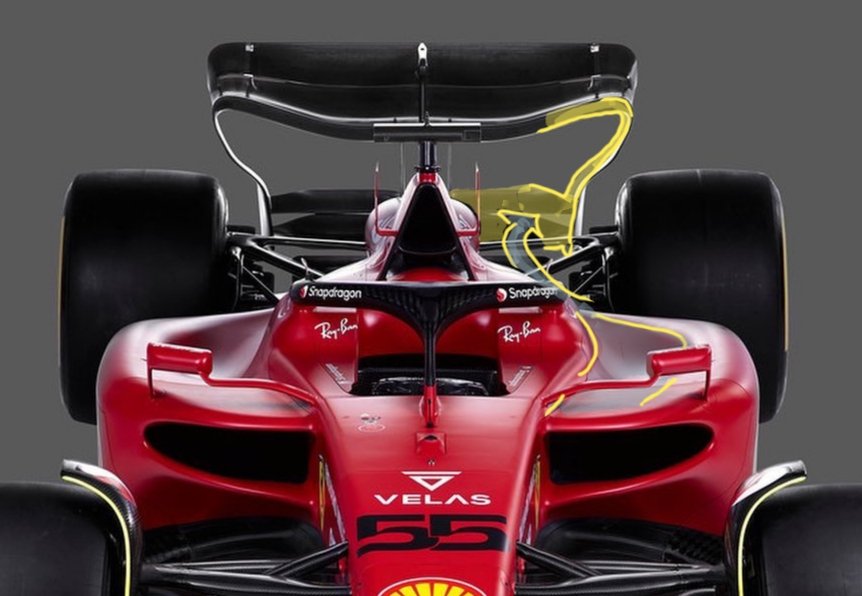
Sidepod dimple appears to be about forming a curved edge to direct airflow toward the rear beam wing. 

The flat sided pod flank is the odd thing here. I wonder if the internal rad layout is different? Perhaps stacked near vertically like the MP4-30? 

@NorthHertsSam do you recall Honda R&D tried some experimentally shaped bodywork a bit like this in 2008? 





Interesting nose. The entire length must be part of the crash structure. But being so, long ferrari have split it. I'd guess the entire nose would normally be switched, not just the tip. 

This isn't something new. Remember after GR63s crash at Imola, I pointed a two part inner structure on the Williams. 





My wild guess for the Ferrari, is the ridgeback sidepod top houses a radiator leaning out from the car. Air is ducted in from the outer face and vents in and out through this louvers. Similar to the mp4-29 but the flow reversed 



• • •
Missing some Tweet in this thread? You can try to
force a refresh




































